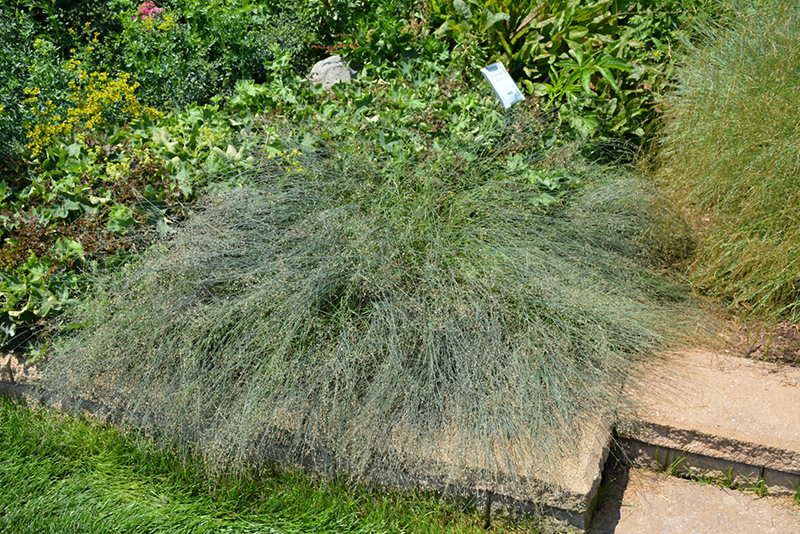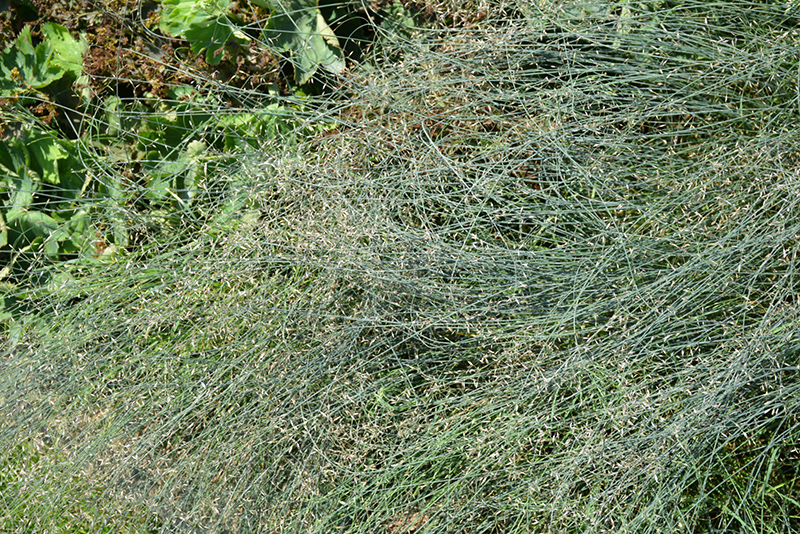Blue Hills Meadow Grass
Poa glauca 'Blue Hills'
Plant Height: 10 inches
Flower Height: 20 inches
Spacing: 8 inches
Sunlight:
![]()
![]()
Hardiness Zone: 2a
Brand: Jelitto
Description:
This fine selection forms an upright, arching clump of striking blue-green foliage; airy heads of tan flowers appear on powder blue spikes in late spring; perfect as a garden accent, or massed in borders
Ornamental Features
Blue Hills Meadow Grass features airy plumes of tan flowers with powder blue overtones rising above the foliage in late spring. Its attractive grassy leaves are bluish-green in color. As an added bonus, the foliage turns gorgeous shades of tan and in the fall. The tan seed heads are carried on showy plumes displayed in abundance from mid summer to late fall.
Landscape Attributes
Blue Hills Meadow Grass is an herbaceous perennial grass with a shapely form and gracefully arching stems. It brings an extremely fine and delicate texture to the garden composition and should be used to full effect.
This is a relatively low maintenance plant, and is best cut back to the ground in late winter before active growth resumes. It has no significant negative characteristics.
Blue Hills Meadow Grass is recommended for the following landscape applications;
- Accent
- Mass Planting
- General Garden Use
- Groundcover
- Naturalizing And Woodland Gardens
Planting & Growing
Blue Hills Meadow Grass will grow to be about 10 inches tall at maturity extending to 20 inches tall with the flowers, with a spread of 12 inches. When grown in masses or used as a bedding plant, individual plants should be spaced approximately 8 inches apart. Its foliage tends to remain low and dense right to the ground. It grows at a medium rate, and under ideal conditions can be expected to live for approximately 15 years. As an herbaceous perennial, this plant will usually die back to the crown each winter, and will regrow from the base each spring. Be careful not to disturb the crown in late winter when it may not be readily seen!
This plant does best in full sun to partial shade. It is very adaptable to both dry and moist locations, and should do just fine under typical garden conditions. It is considered to be drought-tolerant, and thus makes an ideal choice for a low-water garden or xeriscape application. It is not particular as to soil type or pH. It is somewhat tolerant of urban pollution. This is a selection of a native North American species. It can be propagated by division; however, as a cultivated variety, be aware that it may be subject to certain restrictions or prohibitions on propagation.



